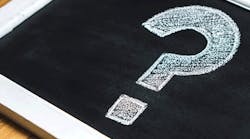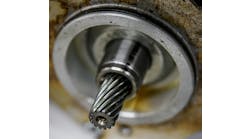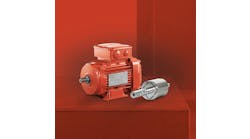Motion control is a bit of a specialty in automated control systems, and its use is not basic, as it can provide advanced machine functionality. It provides the means to move the machine tooling or the part itself in a controlled, and often precision, rotary or linear manner.
Historically, motion control had its own controller and application software with motion-control algorithms to get the work done. Today, much of the motion control can be performed in the main control-system controller, if chosen carefully, but motion still requires specialty amplifiers/drives, motors, position feedback devices and precision mechanical linkage or actuators.
A motion controller contains the motion profiles and target positions for the application and creates the trajectories for the motor and/or actuator. Motion control is often closed loop, so it monitors the actual path and corrects for position or velocity errors. The motion controller often outputs position commands via +/-10 Vdc signals for a servo motor drive or step and direction signals to a stepper motor drive. Industrial Ethernet or similar protocols are used to command many modern drives.
A variety of motion controllers are available. Categories include PLCs, PACs, PC-based, stand-alone and microcontrollers. Modern, programmable logic controllers (PLCs) and programmable automation controllers (PACs) have a limited to wide range of motion-control capabilities. PC-based systems can expand on many of the PLC and PAC capabilities. Stand-alone controllers can be part of the drive or separate with a focus on motion control. Individual microcontrollers can be attached to a part of a small drive or can be directly integrated into an all-in-one drive-and-motor combination.
Regardless of the category of microcontroller selected, some key specifications to consider are the type of motion supported, number of axes, scan rate and feedback resolution. These play a big role in the controller and other motion-control products selected.
Do you need one or many axes? Is high-speed performance needed? How accurate is the positioning that is needed? It’s important to define the motion needed and then find a solution.
Some automation controllers only provide limited motion control, such as a couple of high-speed inputs for feedback signals and a few high-speed outputs for pulse and direction commands to stepper motor drives. The controller may also just control a motor's rpm via a Modbus communication connection to a variable frequency drive (VFD) or turn on a discrete output that runs a motion profile stored in stand-alone drive, and there are many other options.
The drives, including variable frequency, stepper and servo, receive the low-level analog, discrete or communication signals from the selected controller and amplify them to provide high-power voltage and current to the motor. The drives are closely matched to the motor specified, but there are many types including variable-frequency drives, stepper-motor drives, analog-servo drives, digital-servo drives, brushed or brushless dc drives and others.
The controllers are telling the drives where to move the motors that turn the electrical energy they receive into mechanical energy. The motors produce the torque to create the rotational force or linear force when connected to an actuator to rotate at a setpoint speed or move to a commanded position. There are many types of dc and ac motors.
DC motors include both brush and brushless types. The brushed type, such as permanent magnet, series wound, shunt wound and compound wound, use internal commutation and are connected directly to a dc power source to operate. Brushless dc motors, such as stepper motors, need an electronic drive to operate.
The dc motor has many desirable characteristics; a notable one is that it has maximum torque at zero speed. The dc motor is typically simple to install with a wide speed control range, high starting torque and quick acceleration, stopping and reversing.
AC motors include both induction and synchronous types. The induction motor, often used to run pumps, fans and conveyors, can be run directly from line voltage through a motor starter, using a variable-frequency drive or a soft start. The synchronous motor's rotation is closely synchronized with the supply current frequency.
AC motors offer low power demand when starting, and the acceleration, speed, starting current and torque limit can be controlled.
A servo motor can be many types of motors. Many are dc motors, and brushed dc versions are the simplest of servo motors. However, many of the servo motors used in automation are brushless dc motors. The ac brushless servo motor, with permanent magnets, is another option that provides higher performance.
There are many feedback sensors used in motion control. At its simplest, tachometers provide velocity feedback. Photometers provide an analog position feedback, and quadrature encoders provide a digital position relative to a starting, or home, position. Both absolute encoders and resolvers provide absolute position measurement, even after cycling power off and on.
There are many mechanical components to transform the rotary motion into the desired motion, often linear. The bearings reduce the friction and support radial and axial loads. Gearboxes multiply the torque and help to match load inertia while reducing the speed of the output shaft. Ball screws and lead screws connect to the output shaft to convert the rotational motion to linear motion. And linkages tie it all together from the output shaft to actuator, chain, sprocket, belt and pulley, depending on the application.






